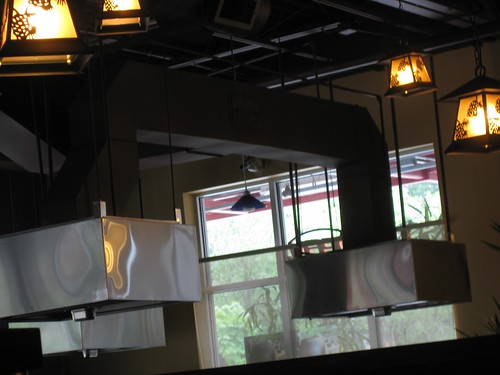
7.22.2008
7.10.2008
Customer-Driven Learning, Knowledge, Graphs, & Smile Sheets
July 10, 2008

A Customer-Driven Approach to Molding Tomorrow's Leaders - CLO
According to conventional wisdom, 70 percent of employee development happens on the job, 20 percent through formal and informal relationships with bosses and mentors and 10 percent in the classroom. However, we are seeing a new dynamic emerge, one that suggests that 50 percent of employee development takes place through challenging job assignments, 30 percent in the classroom and 20 percent through community involvement. This theory suggests that powerful learning experiences are available everywhere and that experiential classroom instruction can be tied more closely to the job than ever before.As Baby Boomers Retire, Companies Fail to Transfer Knowledge - i4cp
If experience is the best teacher, most companies are apparently cutting class when it comes to knowledge transfer (KT). According to a recent study conducted by the Institute for Corporate Productivity (i4cp), just 29% of responding organizations report that they incorporate retirement forecasts into their knowledge transfer practices, and only a third add "skills gap analysis" into those forecasts. Most companies also admit they do not formally measure the effectiveness of their knowledge transfer practices.The three laws of great graphs - Seth Godin
The problem with bar charts is that they should either be line/area charts (when graphing a change over time, like unemployment rates) or they should be a simple pie chart (when comparing two or three items at the same scale).New Design for My Smile Sheet - Will at Work Learning
Instead of asking learners to respond globally (which they are not very good at), it asks learners to respond to specific learning points covered in the learning intervention. This not only enables the learners to better calibrate their responses, it also gives the learners a spaced repetition (improving later memory retrieval on key learning points).Older workforce requires variety of recruitment strategies - PennState Live
"Today's employers will need to be innovative in hiring and motivating their workforce employees who can vary widely in age from Generation X and Y to Baby Boomers," said researchers Diane Spokus, a recent Ph.D. recipient in workforce education, and William Rothwell, professor of workforce education and training and development. "Few institutions have retention efforts under way to retain their mature workforce. But managers will need a smorgasbord approach to fully use the untapped assets of an aging workforce."7.08.2008
Mirror Neurons, Virtual training, Crowds, Misunderstanding, Long Tail, & Copyright

The Mirror Neuron Revolution: Explaining What Makes Humans Social - Scientific American
Mirror Neurons collapse the distinction between seeing and doing.Virtual training at Fort Benning
While much of a recruit's introduction to the Army is the same as it has always been--firing ranges, long marches, obstacle courses, and the like--the Army is increasingly utilizing new technologies to help soldiers learn their jobs.The crowd within - Economist
This suggests that the brain is constantly creating hypotheses about the world and checking them against reality. Those that pass muster are adopted. Guessing the answers to questions you do not know the correct answer to, but have some idea of what the right answer ought to look like, could tap into such a system. A hive mind buzzing with ideas, as it were, but inside a single skull.$37 billion - US and UK businesses count the cost of employee misunderstanding - Cognisco
UK and US employees are costing businesses $37 billion (£18.7 billion) 2 every year because they do not fully understand their jobs, according to a new IDC white paper commissioned by Cognisco, the world's leading intelligent employee assessment specialist.Approximately two thirds of the total cost of misunderstanding reported by organisations was attributed to loss of business due to unplanned downtime (32 percent), poor procurement practice (17 percent) and settlements for industrial tribunals (16 percent). Other costs incurred include regulatory penalties and tax or revenue penalties.
Long-tail economics favors the blockbuster, Harvard study finds - c/net
Remember the long tail? It was the omnipresent theory that suggested there were oodles of cash to be made by monetizing a market's disparate tastes via the Web.Why sell a million copies of Led Zeppelin's Coda, when you can make a thriving business of selling two to three copies of your neighbor's garage band to Rick, two copies of a Nigerian band's tunes to Susan, and so on? As new research highlighted in Harvard Business Review suggests, the answer may well be that the real money is in the blockbuster, not the long tail, after all.
Your Mashup Is Probably Legal - Slashdot
"We've been conditioned to think that if you pull something off the web and use it, you're committing some sort of copyright infringement. But increasingly, the law is moving in the opposite direction. Provided you are making a truly new use of the content, you are free to make money off those copyrighted images and video and sound.
Subscribe to:
Posts (Atom)